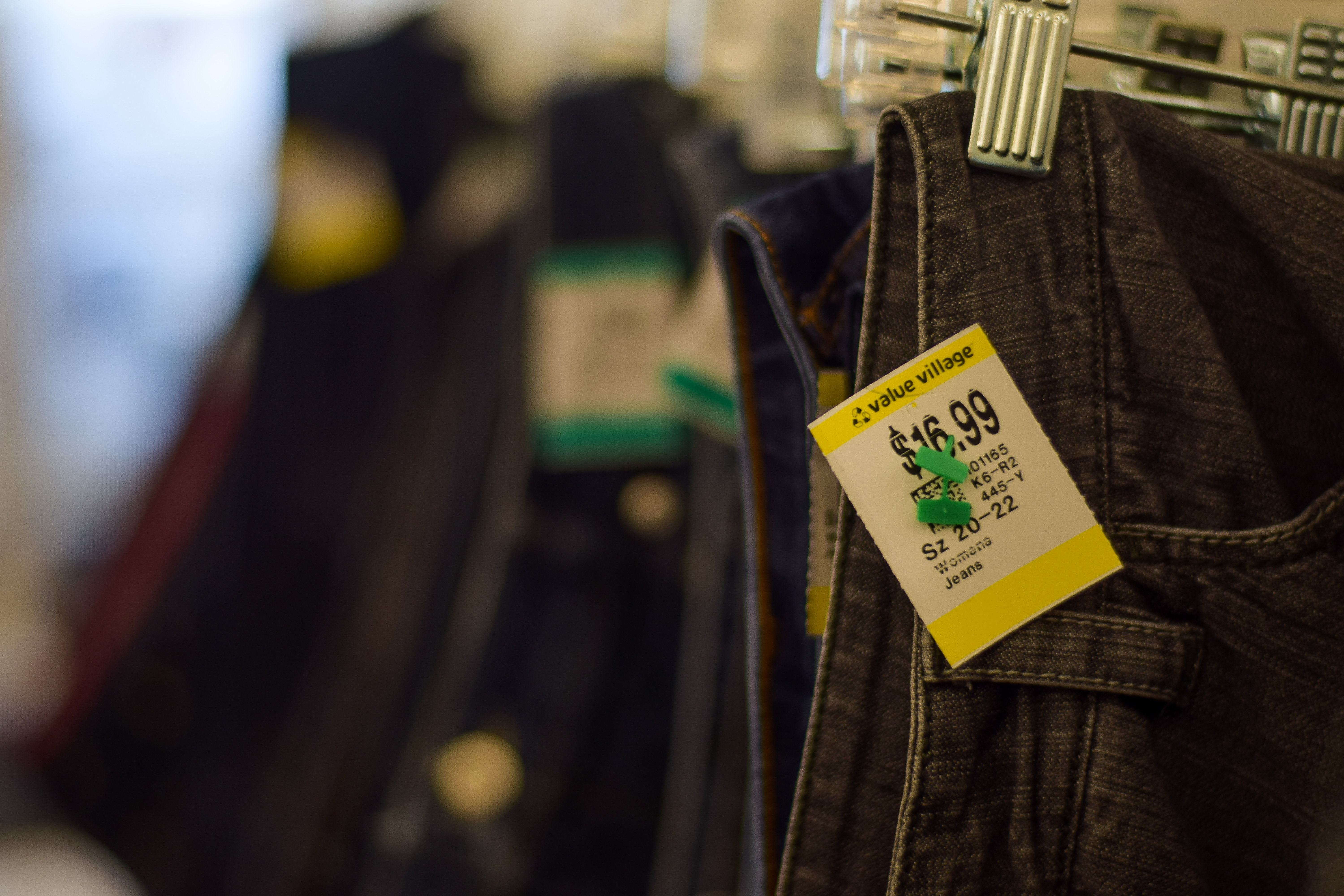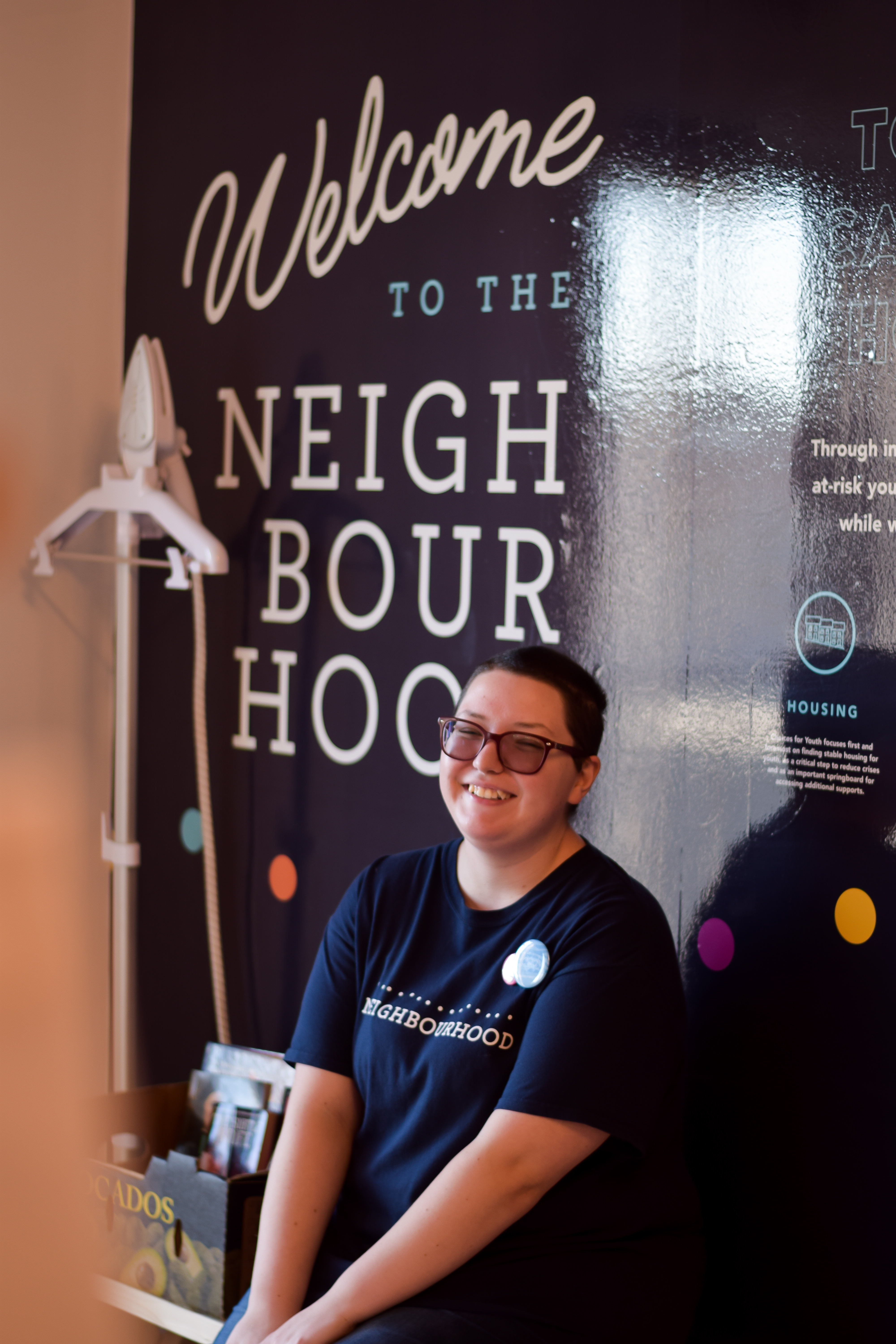‘We bought one outfit each and it was almost $40. That’s not realistic when really that $40 was supposed to get us groceries.’

Ashley Sheppard
Kicker
Aisles of linen, leather and fur fill crowded rooms and busy shoppers look for a bargain. These thrift stores strewn with second-hand treasures are sometimes the only resource for those less fortunate to keep warm.
But Tiffany Burt says there isn’t much of a bargain to find at the thrift stores anymore. The struggle to clothe her family only becomes greater when the winter months come creeping up.
“Honestly, I cried when I realized I needed to go get winter clothes for everybody,” said Burt. “I knew we couldn’t afford it.”
When Burt found out she was pregnant, she was working a minimum wage job. She says she knew then with a baby on board, it would be challenging to make ends meet.
Her now 20-month-old boy grows right before her eyes. Burt says from week to week, she has to buy new clothes to replace the ones he’s grown out of.
“That’s what it comes down too. You have to choose whether your clothing your kids and your family, or if your buying groceries that week, or if you’re paying the light bill that week. We’ve struggled with that a million times.”
During the months of maternity leave, Burt’s partner struggled to balance his home and work life. He would often stay home to help with the baby, which caused him to lose his job. They were making just about $400 every second week.
“You have to choose,” said Burt. “That’s what it comes down too. You have to choose whether your clothing your kids and your family, or if your buying groceries that week, or if you’re paying the light bill that week. We’ve struggled with that a million times.”
Burt says she can’t understand why thrift stores in the city mark second-hand goods at prices so out of her reach.
She says she noticed specifically the stores she frequents take advantage of popular brand name items that get donated, and price them unreasonably high.
“I’d get excited because I’d see a Columbia jacket, and I’d think oh, OK, I might actually have a chance to own something nice and appropriate and it’s not going to drain my bank account. But then I’d walk over to it and it’s 60, 70 or even 80 dollars- because it’s Columbia.”
“My child has one but what about the other 100 or 200 families in CBS that are going to go to the food bank and hope and pray there is something there for their kid.”
Burt says the pressure to send her son to daycare looking like the other kids is daunting. Out of fear of being looked down on or bullied, it’s important to her that her son wears clothes that allow him to fit in. Clothing that is not tattered and fits properly is ideal. But, if she can score something that is trendy, then even better.

“We bought one outfit each and it was almost $40,” said Burt. “That’s not realistic when really that $40 was supposed to get us groceries.”
Professor of economics at Memorial University, Michael Wernerheim, says there are many factors that might contribute to this. Some of which, have to do with consumer behaviour.
“One of the factors that is attributable to consumers is this change in attitude towards second-hand and vintage clothing,” says Wernerheim, “I think it is more socially acceptable these days.”
He says not only is it more socially acceptable – it’s trendy. More people are going to thrift stores because they desire vintage or retro clothes and accessories, not because they can’t afford to buy new. In turn, stores feel more inclined to bump up their prices.
Wernerheim says the current state of the economy also has a role to play.
“When there’s a downturn in the economy, then people defer donating clothing to second-hand stores,” said Wernerheim. “They simply use their own clothing longer and maybe don’t donate them at all. So, there’s less supply forthcoming when the market is depressed, which it is now and it has been here for some time. So, that reduces supply, and that in itself drives up prices.”
Kim Hamlyn, an employee at a local thrift shop, says not all second-hand stores bare those heavy price tags.

Neighbourhood, located on Torbay Road, is a Choices for Youth social enterprise that offers young people the opportunity to gain work experience. The store opened in August and Hamlyn says all proceeds directly support at-risk and homeless youth, in addition to the services and programs provided by the organization.
The thrift store offers blanket pricing for each department in the store. Every item in the kid’s section is $1.
Hamlyn says the reason for this is simple – there was a lack of options for low-income individuals and families to purchase clothes at prices they could afford.
“We want to make it as easy as possible to come in with just a $20 bill and go home with a bunch of clothing,” said Hamlyn.
For this winter, Burts says she got lucky. Instead of paying the $30 or $40 she says she would normally pay to buy a coat for her son second-hand, she found one at her local food bank. It was just his size.
“My child has one but what about the other 100 or 200 families in CBS that are going to go to the food bank and hope and pray there is something there for their kid.”




Be the first to comment